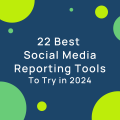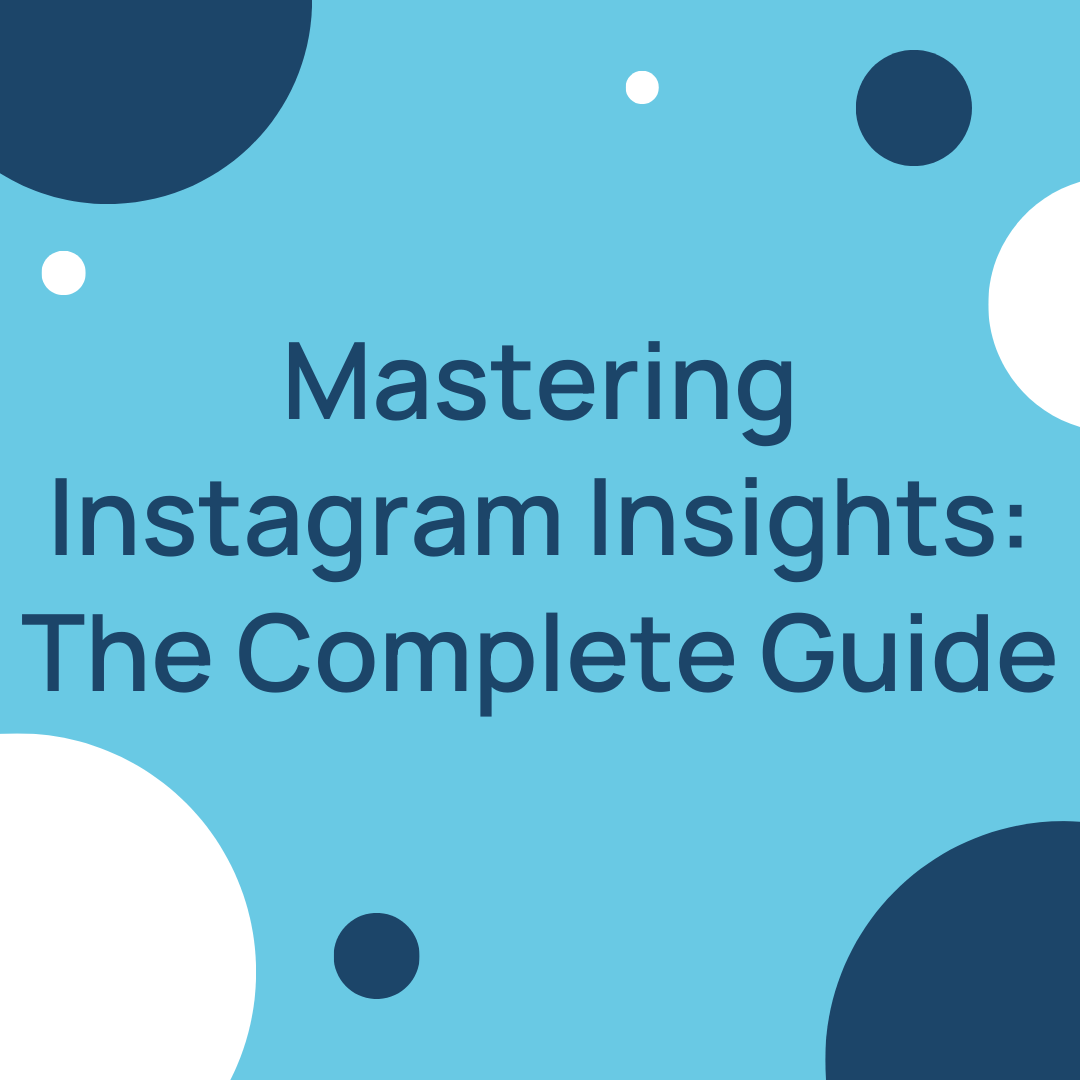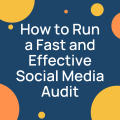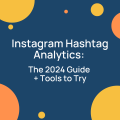Facebook Page Posts Reached 12.37% Of The Audience In February
Tina Ahmed posted on 24 March 2017
Welcome to our Facebook page likes growth and content engagement study for the month of February 2017.
You can examine the performance of the 5,000 pages in our study to figure out the growth and engagement standards on the platform.
Take a free Locowise trial now and compare your own pages against pages in our study by using our Facebook Benchmarker tool.
Let’s review the February performance and all the latest news and information from Facebook.
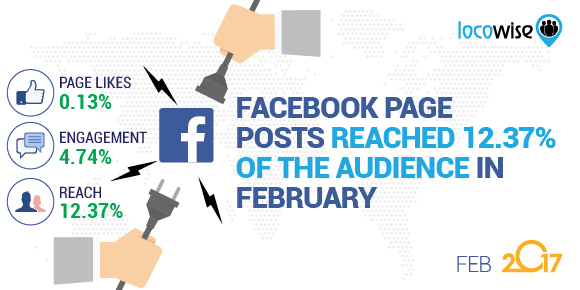
Facebook pages growth and engagement in February
Page likes growth in February was at 0.13% of the total page audience. This is the same growth we’ve seen in the month of January.
The average post reach was at 12.37% of the page audience. This is a 39% increase compared to January. It’s also the highest post reach we’ve seen since we started doing our studies in May 2015. The previous record high reach was in March 2016 with 11.41% of the total page audience seeing a post on average.
This is great news for all the pages relying on organic reach and it will be interesting to see how things progress in upcoming months. Have you experienced an organic spike in reach on your pages?
Post engagement rate was at 4.74% of people reached. This is the second lowest engagement rate we’ve since in the period of our studies, but it’s still a 10% increase compared to that 4.32% ER we saw in January 2017.
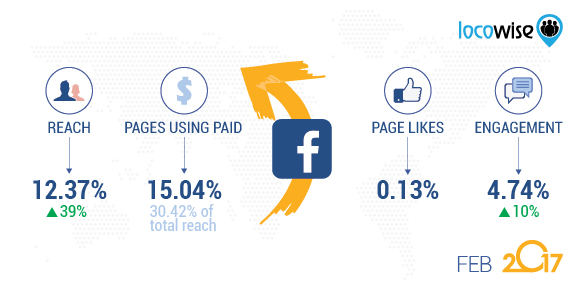
15.04% of pages in our study used Facebook advertising in February in order to promote their page content. They paid for 30.42% of their total reach on average.
Video is still the king
Video is still the king of content formats. Average video post reached 13.4% of the total audience, while it engaged 5.49% of people reached. Photos reached 13.13% of the audience and engaged 4.67% of those reached.
Links reached 8.74% of the audience engaging 4.32% of them, while plain status updates only reached 4.75% and engaged 4.65% of them.
A video post engaged 0.74% of your total audience, photos 0.61%, links 0.38%, while status updates only engaged 0.22%. For every video you post you get 236% more people to engage compared to a status update.
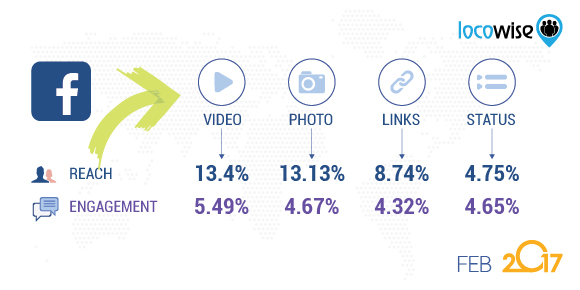
Video to auto-play with sound on by default
Previously you had to tap on the video to hear the sound, but now Facebook is making all videos to be auto-played with sound on by default. “Sound fades in and out as you scroll through videos in News Feed, bringing those videos to life. If your phone is set to silent, videos will not play with sound. If you never want videos to play with sound, you can disable this feature by switching off “Videos in News Feed Start With Sound” in Settings.”
It is slowly being rolled out and is expected to be rolled out to all audiences globally by end of this year. It will be interesting to see how this affects the engagement on the videos. Our study showed that only 21.8% of all videos are clicked to play sound, so this brings many more opportunities to brands and advertisers.
The silent movie era on social media is still alive, so do check out our advice on optimising your videos for those silent views.
Facebook boosts authentic content
Facebook has changed its news feed algorithm in order to boost authentic content that “people consider genuine and not misleading, sensational or spammy”. Facebook basically wants to remove all the fake news from the platform.
Facebook has “categorized Pages to identify whether or not they were posting spam or trying to game feed by doing things like asking for likes, comments or shares. We then used posts from these Pages to train a model that continuously identifies whether posts from other Pages are likely to be authentic. For example, if Page posts are often being hidden by people reading them, that’s a signal that it might not be authentic. If a post is likely to be authentic based on the new signals we look at, it might show up higher in your feed.”
Note also that Facebook is not only going after fake news, but also going after pages that try and game the algorithm by asking the fans to like, share or comment on the posts. Be careful if messages such as “click on the “like” button” are part of your posts.
Check out our complete guide on this: The War On Clickbait: How To Stay On The Playing Field.
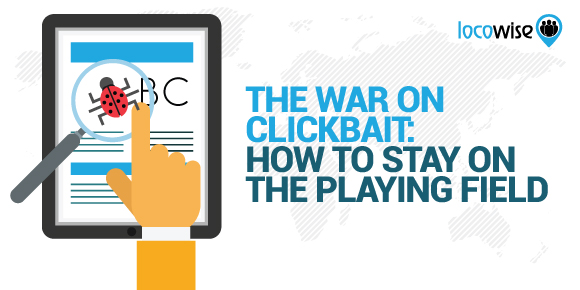
Reactions now weigh little more than Likes
Facebook has adjusted the news feed algorithm to account for Reactions when deciding which content to display in the user news feeds. Facebook announced: “Over the past year we’ve found that if people leave a Reaction on a post, it is an even stronger signal that they’d want to see that type of post than if they left a Like on the post. So we are updating News Feed to weigh reactions a little more than Likes when taking into account how relevant the story is to each person.”
Facebook also said “that “love” is far and away the most popular of all reactions, accounting for more than half of all reactions shared on the service.” Currently all reactions are weighted the same in the algorithm so there is no difference between “love” and “sad” for example.
This means that if you have a really dedicated and engaged audience that uses Reactions rather than the easy Likes, you may stand in getting more of your content more often seen in news feeds.
Creating engaging and shareable content is still number one rule to get your content seen by more people organically. Take a look at our guide: The Beginner’s Guide To Making Your Content Incredibly Shareable.
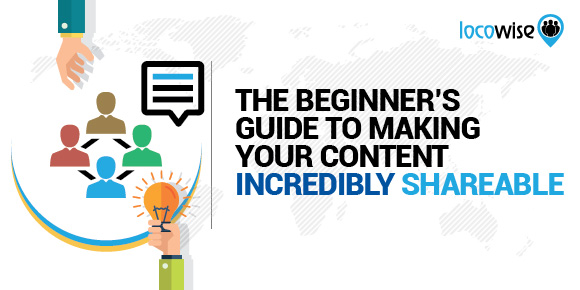
More real-time signals to surface viral and trending content
Facebook “will now take into account how signals change in real time. So now if there is a lot of engagement from many people on Facebook about a topic, or if a post from a Page is getting a lot of engagement, we can understand in real-time that the topic or Page post might be temporarily more important to you, so we should show that content higher in your feed.
For example, if your favorite soccer team just won a game, we might show you posts about the game higher up in News Feed because people are talking about it more broadly on Facebook.”
Here’s our guide on how you can get on those trending content topics: How To Inject Some Spontaneous Content Into Your Social Media.

